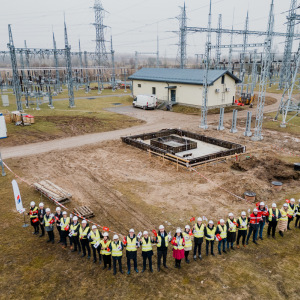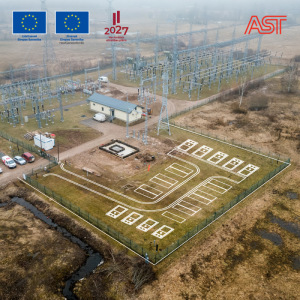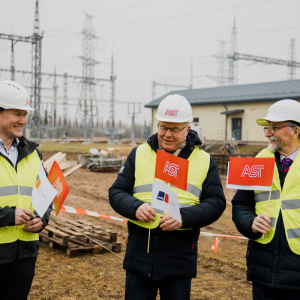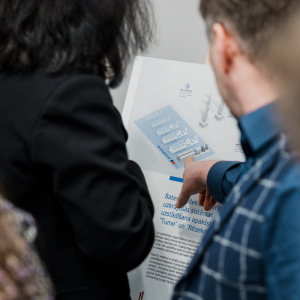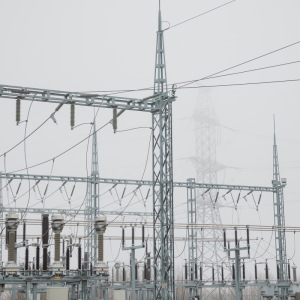
Europe’s most powerful battery energy storage systems to be installed in Latvia for the security of the energy system
Latvian transmission system operator Augstsprieguma tīkls AS (AST) and German company Rolls-Royce Solutions GmbH (Rolls-Royce) have started cooperation on the construction of Battery Energy Storage Systems (BESS) essential for the security of the energy system of Latvia. Rolls-Royce will install the battery system at AST substations in Rēzekne and Tume with a total power of 80 MW and a capacity of 160 MWh, currently being one of the most powerful and largest battery systems in the European Union.
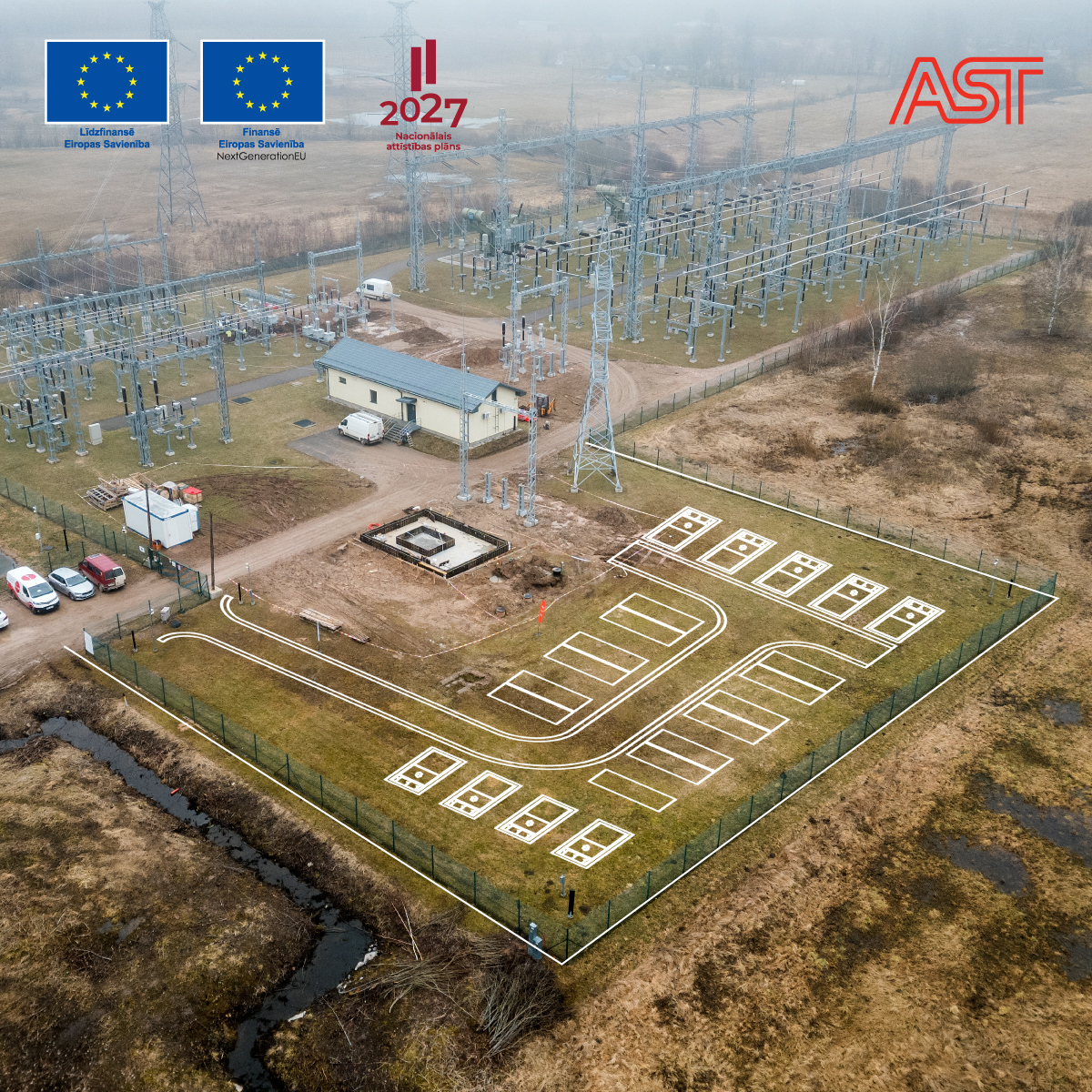 BESS placement in AST substation "Tume"
BESS placement in AST substation "Tume"
Kaspars Melnis, the Minister of Climate and Energy points out: “The most ambitious energy independence project in the Baltics is in its final phase, with major contributions from all the stakeholders. The battery system is an essential infrastructure element for the security and stability of Latvia’s energy supply. The batteries will work as modern accumulators for storing large volumes of energy, which will be important for ensuring energy balance once the Latvian electricity supply grid works in sync with the European grid.”
This week, the project stakeholders jointly visited the construction site at the substation in Tume, where the construction works has already begun for connecting the batteries to the grid. During the meeting, Rolands Irklis, Chairman of the Board at AST, emphasised: “Within the scope of the contract with Rolls-Royce, we will deploy high-power batteries in Tume and Rēzekne, which is one of the most important projects for synchronising the joint energy grids of the Baltic states with the European system. This is an important step towards the security and energy independence of Latvia and the Baltics from their eastern neighbours, enabling us to more independently maintain our systems and ensure a stable and safe energy supply for our consumers. Importantly, the battery project has received co-financing from European funds in the amount of more than 85%, with no significant impact on the electricity transmission tariff.”
The European Union financing from the Recovery and Resilience Facility (RePowerEU) in the amount of 100% has been attracted for the delivery and installation of the battery systems in Rēzekne. At the same time, BESS in Tume and the substation expansion works related to BESS connection in Tume and Rēzekne will be co-financed in the amount of 75% by the Connecting Europe Facility (CEF).
“A lot of the credit for attracting EU funding for installation of the battery goes to the team of the Ministry of Climate and Energy, who have led intensive negotiations with the European Commission, especially over the last year. The Latvian transmission operator has made an equally important contribution to the development of the synchronisation project,” the Minister emphasised.
All equipment will be provided by Rolls-Royce Power Systems, one of the world’s best-known manufacturers of energy storage systems. Dr Jörg Stratmann, CEO of Rolls-Royce Power Systems, explains: “We are honoured to be able to contribute to this important and safety-critical project in Latvia. Our battery solutions, being one of our strategic business areas, represent a sustainable and reliable contribution to energy security worldwide. The object planned in Latvia will be our largest battery system to date.”
The state-of-the-art battery system will provide the high-speed and automatically-activated frequency regulation reserves needed for synchronisation mode, in which the Baltic electricity transmission systems will work in synchronisation with the continental European grids. In addition, the battery system will be able to provide these reserves more economically than most conventional plants. Such high-speed reserves will be important both when operating in synchronisation mode and in the future with the share of renewable resources increasingly growing in the energy system. In 2021, AST, having assessed the possible scenarios for the availability and development of power reserves together with the Baltic transmission system operators Litgrid AB and Elering AS, concluded that, in terms of energy supply and economic feasibility, batteries are the best solution for ensuring the Baltic balancing power reserves required in the future.
Alongside the battery construction, to be implemented by Rolls-Royce in cooperation with German company LEC Construction International GmbH and Latvian company Enersense SIA, AST will independently develop the battery control system. This IT solution will allow the batteries to be controlled according to a particular algorithm and grid situation, charging or discharging electricity in the grid.
The battery system will be deployed in two locations – a 20 MW/40 MWh battery at the AST substation in Tume and a 60 MW/120 MWh battery at the AST substation in Rēzekne. Rolls-Royce’s proposal to supply and install the BESS system for a total contractual amount of EUR 77.07 million was the most economically beneficial in a competition between three suppliers in an open procurement procedure.
The company of the supplier has a history of more than 115 years, and its Rolls-Royce structural unit in southern Germany manufactures high-speed engines and various drive systems for power generation, heavy land and rail vehicles and ships. It also produces a wide range of energy equipment, including energy storage systems, as well as various climate-neutral solutions.
Over the last decade, AST has made fundamental changes to the transmission network infrastructure and control technologies to prepare the Latvian transmission system for synchronous operation with continental Europe by 2025. The disconnection of the Latvian energy supply system from the Russian-controlled grid is a key condition for achieving Latvia’s energy independence and security of energy supply. Following Russia’s invasion of Ukraine, risks to the Baltic energy systems also increased, which is why a political agreement was reached in 2023 to accelerate the synchronisation of the Baltic power grids with continental Europe by early 2025, almost a year earlier than originally planned.
 This European Union (EU)-backed project, the most ambitious energy independence project in the Baltics, is in its final phase. According to the original plan, all infrastructure projects in Latvia will be completed by the end of 2025, with the bulk of the work completed by February 2025, ensuring technical readiness for the safe and stable operation of the system in synchronisation mode.
This European Union (EU)-backed project, the most ambitious energy independence project in the Baltics, is in its final phase. According to the original plan, all infrastructure projects in Latvia will be completed by the end of 2025, with the bulk of the work completed by February 2025, ensuring technical readiness for the safe and stable operation of the system in synchronisation mode.


